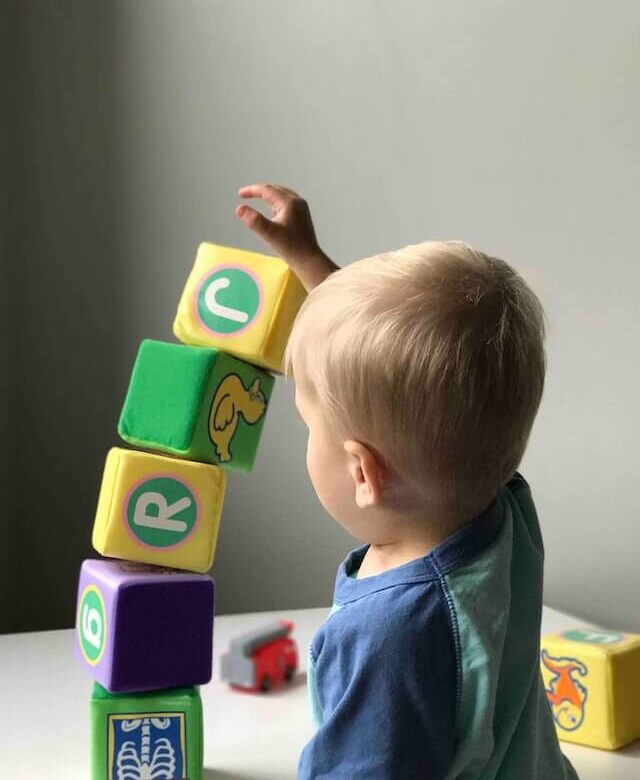Early detection and intervention can help children with autism live happier and more fulfilling lives. Although there isn’t a straightforward examination process that can detect autism in children, there are signs that you can watch out for. This article dives into the signs of autism in babies and how to spot them.
How Young Do Children Show Signs of Autism?
Signs of autism are tough to spot in young children. Parents aren’t often on the lookout for signs of autism spectrum disorder (ASD) in their newborns. Although every child develops at varying speeds and levels, delays can often indicate a disorder.
This begs the question: how young do children display signs of ASD?
Generally, parents can observe signs of autism in their babies as early as 3 to 6 months. While news of your baby having autism can feel overwhelming and disheartening, you should know it’s not the end of the road.
Recognizing early signs of ASD in children can help them get the right care and treatment ASAP. This increases their chances of living a happy and fruitful life, despite their autism diagnosis.
Autism Signs By 3 Months
Symptoms of ASD can be identified in children as young as 3 months. Here are a few things to watch out for if you’re worried about your baby:
- Your baby isn’t reacting to loud sounds or noises in their surroundings.
- They don’t smile at you or other people.
- They don’t make any babbling noises or don’t try to pronounce words.
- They don’t follow objects with their eyes, especially brightly colored toys.
Talking to a professional about your baby’s symptoms can help you find the right care for him or her. If you suspect your little one to have autism, speak to their pediatrician as soon as you can.
Autism Signs By 7 Months
Some babies don’t show signs of autism until they’re a little over six months old. Look for the following signs to determine whether your 7-month-old has autism:
- Your baby doesn’t show affection toward you or another parent.
- They don’t respond to the word “no.”
- They don’t blabber or try to say words.
- They don’t try to interact with you through actions.
- They don’t respond to their name.
- They don’t show interest in socializing or playing games like peekaboo.
Babies are naturally curious and want to explore their surroundings as much as they can. If your child doesn’t show the same level of curiosity, it can be a strong indicator that they may have ASD.
Signs of Autism in Children Over a Year
Children older than 12 months display more pronounced symptoms of autism. Look out for the following signs at 12 months if you’re worried about your little one:
- Your toddler is displaying strange sensory sensitivities (e.g., they feel uncomfortable when hearing loud noises).
- They seem unable or unwilling to make simple gestures, like waving goodbye or nodding.
- They are unable to ask for or point to toys they want to play with.
- They don’t attempt to pronounce words.
- It’s difficult to soothe them when they’re upset.
- It takes them a while to respond or recognize their name.
At 18 Months
It’s possible for babies not to develop noticeable autism signs until they’re 18 months old. Children may be able to experience certain milestones before regression starts to kick in.
Keep an eye out for the following symptoms if you suspect autism in your 18-month-old:
- They remain nonverbal and haven’t spoken their first words.
- If they already speak, they may start to lose their language skills at this point.
- They don’t engage in pretend play.
- They don’t point at objects they’re curious about.
- They experience outbursts or meltdowns when faced with minor routine changes.
- They seem to ignore things you say or ask.
Signs of Autism in Children That are 2 Years Old
Two-year-olds with autism typically display similar symptoms as 18-month-old patients. Generally, they don’t seem all that interested in interacting with their peers. Additionally, they may display unusual and repetitive behaviors, like staring at a rotating wheel for too long or repeating a certain word they just heard.
Other signs that you may notice include the following:
- Problems with maintaining eye contact
- Doesn’t respond when called by their name
- Doesn’t socialize or participate in games with peers
- Has trouble with verbal and nonverbal communication, especially since many 2-year-old children already know how to speak in sentences
What is Regression?
When a child diagnosed with autism loses a certain skill, this is often referred to as regression. For instance, a child with ASD may have learned how to speak a few words for a certain period of their development. As their condition progresses, they may lose this ability, their language skills reverting to zero.
Regression is a huge indicator that a child may have ASD. Typically, signs and symptoms appear between the ages of 15 and 30 months.
Signs of regression include the following:
- Your child is no longer using gestures or maintaining eye contact
- Your child has lost interest in socialization and engaging with others
- Your child has reverted to playing with their toys or watching TV on their own
Keep in mind that every child with autism is unique, and their progress will be determined by a variety of factors.
Testing for Autism in Babies
Autism is not an easy disorder to diagnose because there isn’t a fixed medical test or examination for it. Instead, doctors evaluate the patient’s developmental history to reach a diagnosis. Parents and guardians may also be asked to participate in interviews.
Your answers are crucial in the screening of your child. If all checks out and you have no concerns, you’re done. However, if your child exhibits developmental delays or your doctor has doubts, they will refer you to a specialist for additional testing.
Babies may be diagnosed as early as 6 to 18 months. However, most people don’t receive a reliable diagnosis until they reach the age of 2.
Developmental Screening
Developmental screening examines your child’s development in greater detail. The American Academy of Pediatrics (AAP) suggests behavioral and developmental testing for all children at ages 9, 18, 24, and 36 months during regular well-child visits.
A doctor, nurse, or another healthcare professional can perform the screening on your child. Aside from asking you questions about the child’s development, the doctor may also talk to your child or play with him to determine any sensory, behavioral, or cognitive issues.
Testing questionnaires and checklists are also based on studies that compare your child to other children from the same age group.
Comprehensive Behavioral Evaluation
Comprehensive evaluations aim to provide patients with a personalized treatment plan. This evaluation will include the following:
- A visual and verbal assessment of the patient’s behavioral and developmental patterns
- Genetic testing
- Neurological testing
- Hearing and vision testing
- A brief interview with the parents
- Other medical evaluations
Identifying the Signs of Autism in Children
The autism diagnostic process is difficult and time-consuming. However, you can begin treatment as soon as you suspect your child has developmental delays. Screening must also be continuous during the first three years.
Early intervention is a federally funded program for disabled infants and toddlers. It’s designed to assist children with autism in reaching their full potential.
Children who exhibit several early warning signs may experience developmental delays. Whether or not they meet the full criteria for ASD, they can benefit from early intervention.
If you are ready to work with the best ABA therapy provider in New York, New Jersey or Indiana, give us a call at (732) 402-0297. Our dedicated team is ready to help and we will treat you like family.












